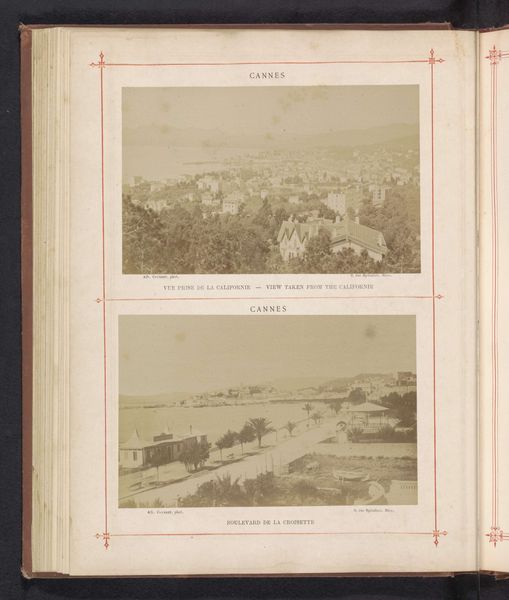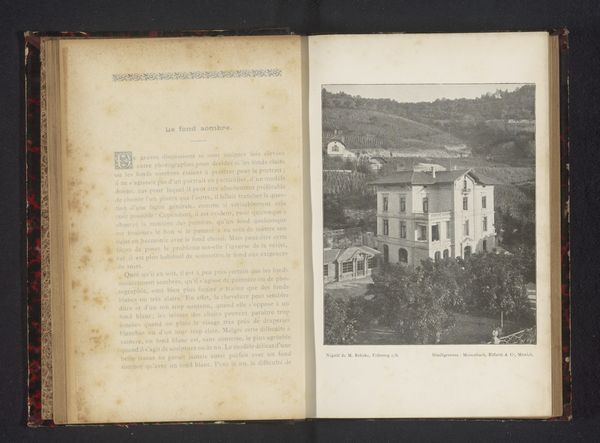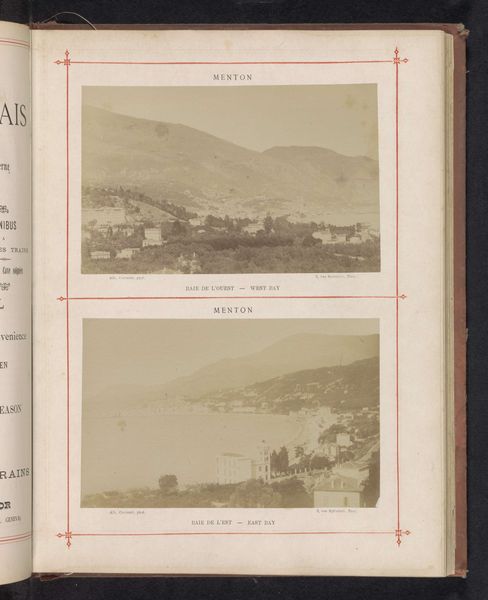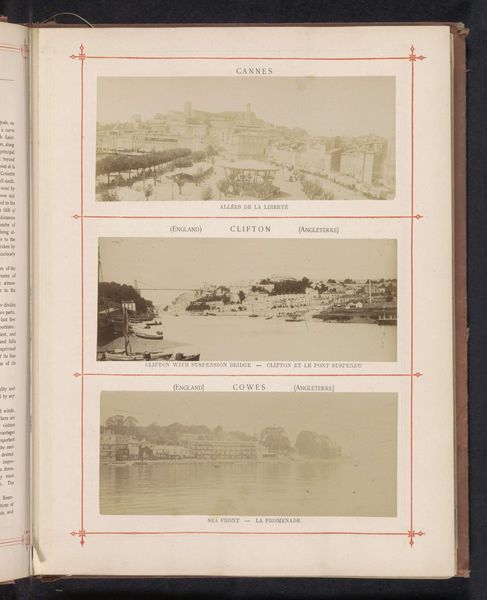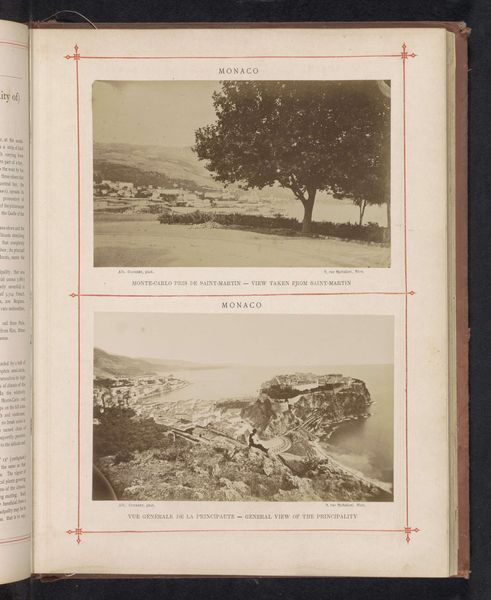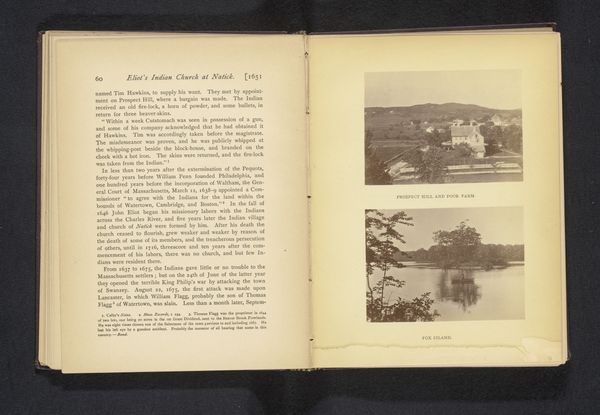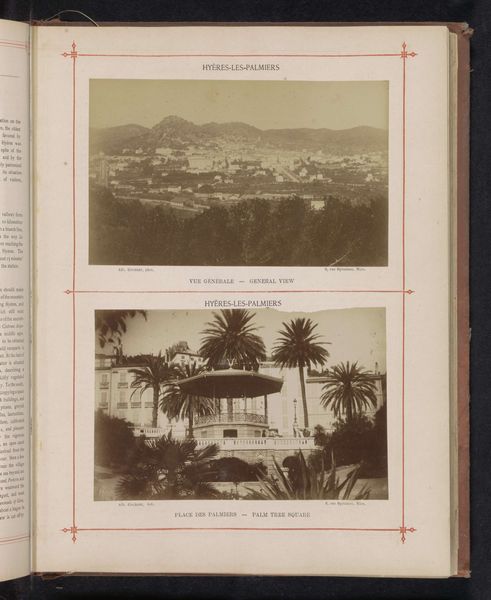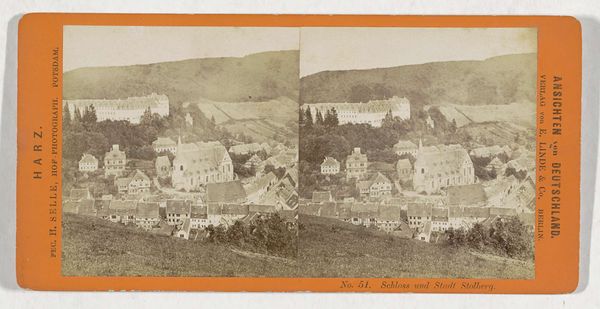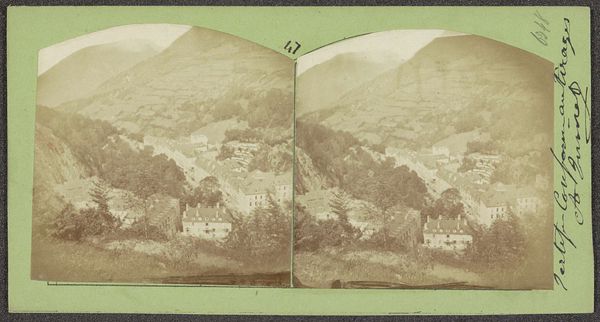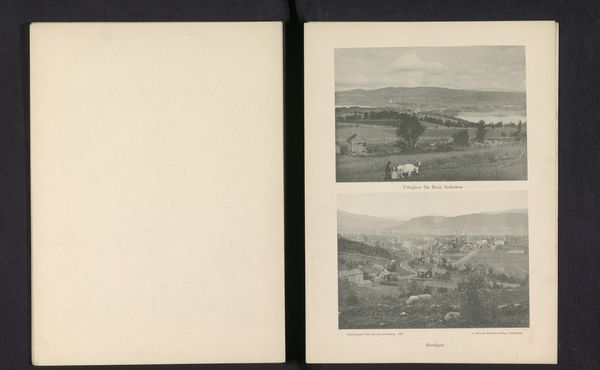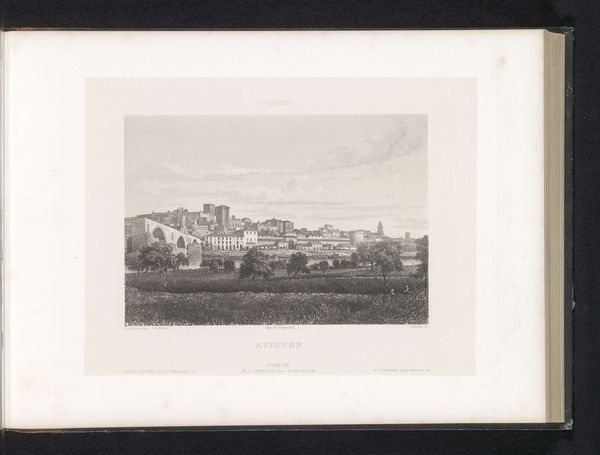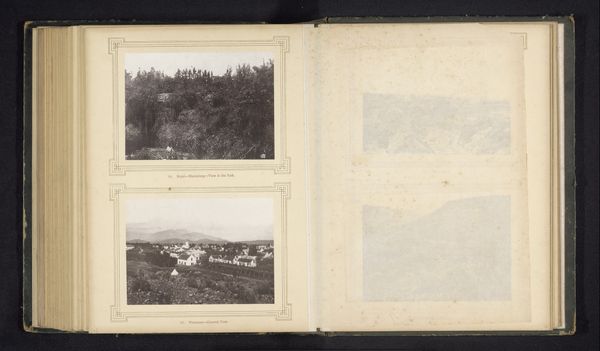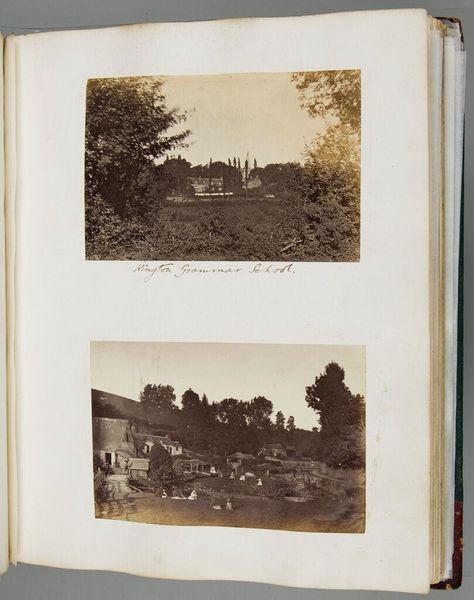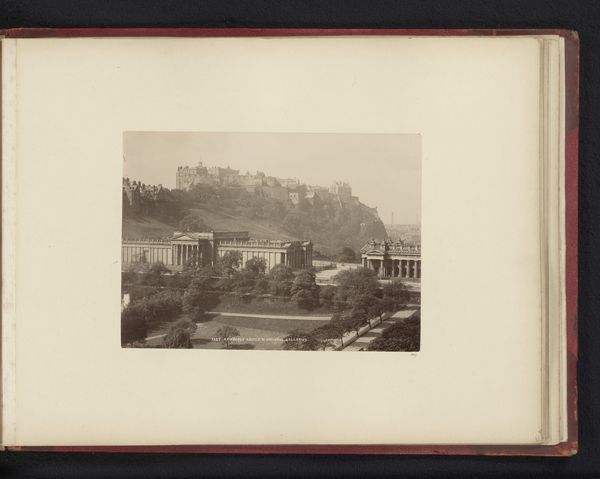![['General view', 'Grand Hotel'] by Albert Courret](/_next/image?url=https%3A%2F%2Fd2w8kbdekdi1gv.cloudfront.net%2FeyJidWNrZXQiOiAiYXJ0ZXJhLWltYWdlcy1idWNrZXQiLCAia2V5IjogImFydHdvcmtzL2MwMTI3OGUwLWQ1ZjYtNDYzMS1hMWMxLWVkNTBiN2UwMDVmMi9jMDEyNzhlMC1kNWY2LTQ2MzEtYTFjMS1lZDUwYjdlMDA1ZjJfZnVsbC5qcGciLCAiZWRpdHMiOiB7InJlc2l6ZSI6IHsid2lkdGgiOiAxOTIwLCAiaGVpZ2h0IjogMTkyMCwgImZpdCI6ICJpbnNpZGUifX19&w=3840&q=75)
photography, albumen-print
#
pictorialism
#
landscape
#
photography
#
orientalism
#
cityscape
#
albumen-print
#
building
Dimensions: height 343 mm, width 260 mm
Copyright: Rijks Museum: Open Domain
Curator: Let's discuss these two images, "General View" and "Grand Hotel," taken by Albert Courret, likely before 1886. They're presented as albumen prints within what seems to be a larger album. Editor: Immediately, the overriding sense I get is one of tranquil order, almost utopian. The compositions are calm, very carefully structured, and they communicate a real sense of place. The muted tones add to this feeling of serenity. Curator: Courret worked extensively in the late 19th century, producing many photographs of Mediterranean locales. I'm interested in what the production of these images meant during a period of intense colonial activity and the development of European tourism. This photograph is far from objective, is it? Editor: Absolutely not. The "General View" depicts a rather picturesque town nestled in the hills. Note the visual balance between the built environment and nature. It recalls classical landscape painting; however, this constructed, peaceful image, undoubtedly romanticizes the area. What cultural tropes are being enforced? Curator: It’s definitely packaged for a Western audience, perhaps to sell an idealized version of Mediterranean life. Consider the Orientalist style present, it’s subtle. Even this style enforces and presents the Western view of "the East," right? There’s a tension here, particularly when considering what’s intentionally left out, the more difficult elements of colonial life. Editor: The symbol of the "Grand Hotel" itself is also really compelling here, too, a bastion of Western culture imposed upon the landscape. What statements about power, culture, and privilege are visible here? The architecture feels so deliberately placed, in stark contrast with its surroundings. Curator: These images operate on multiple levels. On the surface, we have seemingly innocent photographs. But underneath, we see layers of cultural encoding, assumptions about travel, leisure, and a clear power dynamic between the photographer, his subject, and his likely audience. Editor: And by presenting these images as parts of an album, it suggests that it is but a sample in a much broader experience being marketed. The sense of curated experiences and of memory feels palpable here, even though it is from so long ago. This romantic idealism certainly sells very well. Curator: Exploring art in this way highlights how even seemingly straightforward landscape images are never truly neutral. Editor: And by focusing on how imagery operates, we can begin to understand why some survive the passage of time and continue to hold symbolic importance. Thanks for guiding me on this.
Comments
No comments
Be the first to comment and join the conversation on the ultimate creative platform.
